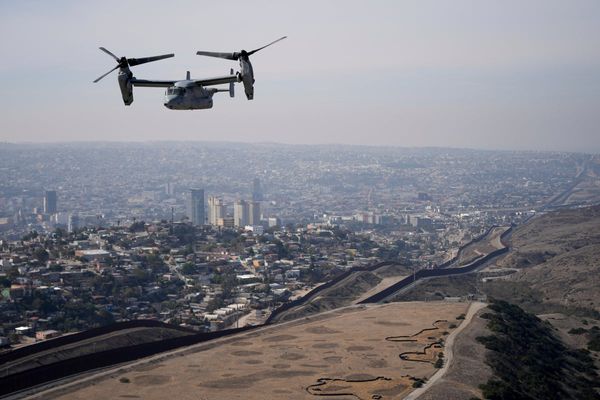
The brickwork in the alleyway was back to its uniform black after Glasgow council workers raced to remove a rat in a bowler hat.
The fresh paint, still adorned with hazard stickers after being applied on Thursday evening, covered a stencil of a rodent that would be familiar to any fan of Banksy.
The graffito had appeared the day before, the rat wearing a union jack bowler while banging a drum emblazoned with the words “God save the King” – and Glasgow residents had immediately recognised the garb of one of the city’s traditional but highly controversial Orange parades.
Banksy’s first solo exhibition in 14 years, Cut and Run, had just opened at the nearby Gallery of Modern Art (GoMA) – and tickets had sold out at speed.
But was this genuine or a fake? As Glaswegians debated its provenance, the Instagram account for Cut and Run shared the image with the teasing “yes or no?”. The exhibition’s publicists later insisted neither this nor the smattering of other rats which have appeared then disappeared across the city centre were Banksys.

In recent years, Glasgow has revelled in a street art renaissance, with the annual Yardworks festival, one of Europe’s biggest public art projects and tourist trails, taking in the city centre’s popular gable-end murals. The city council is exploring options for setting up legal walls where young people can develop their work without fear of arrest.
But on the drumming rat, the council was unyielding. On Thursday evening a spokesperson said: “The image has been removed. We understand it was not by Banksy. Anyone who wants to be certain of viewing a true Banksy should head to the exhibition at GoMA.”
And just around the corner from the well-painted alleyway, the elusive artist does indeed find himself enfolded in Glasgow’s notoriously warm embrace. All in the sun-dappled queue on Thursday evening – the exhibition is open until 11pm on weekdays and through the wee hours until 5am at weekends – agreed that everyone they knew wanted tickets.

“Glaswegians love street art,” explained Suzanne Farrer, a scientist, who lives in the city. “And they love Banksy: the quirkiness, what he stands for, and that secretiveness.”
Valerie Goff, a retiree, was already planning a trip from her home in Shrewsbury as she read about the show. “I booked as soon as I saw. He feels at home here: art has always been really important to Glasgow. You can see that across the city, with the art school and Kelvingrove gallery.”
The carnival atmosphere of round the clock queueing and stencil-spotting that has attended previous Banksy shows is now taking hold in Glasgow, and it was perhaps inevitable that imitators would chance it, said Prof Paul Gough, the vice-chancellor of Arts University Bournemouth, who has written widely on Banksy and street art. “He just lets it happen, and people want to be part of that spectacle.”

Banksy, who has never revealed his true identity, explained that he chose this venue because of its proximity to his “favourite work of art in the UK”: the statue of the Duke of Wellington directly outside GoMA, which members of the public have continuously topped with a traffic cone for decades, despite the best efforts of the police and council.
In the early hours of Friday morning, This Is Rigged – the direct action group famous for disrupting first minister’s questions with shouted interventions about oil and gas transition – replaced the traffic cone with their own version and an invitation to Banksy to join their disruptions.
The summer months are when Scotland’s capital usually hogs the cultural spotlight. But, despite the draw of the Edinburgh festivals, it is now Glasgow attracting international attention – with a show that is reflective of the city’s gallus charm, anti-establishment politics and fondness for cheek.
Banksy chose Glasgow “very deliberately”, Gough believes. “It tunes into the existing street art culture in the city. What is condoned as urban art and what is not as tagging is always a tension.”
Later on Thursday evening, a defiant message had appeared in the alleyway of the erstwhile rodent, scrawled across the freshly painted surface: “Banksy was here.”







